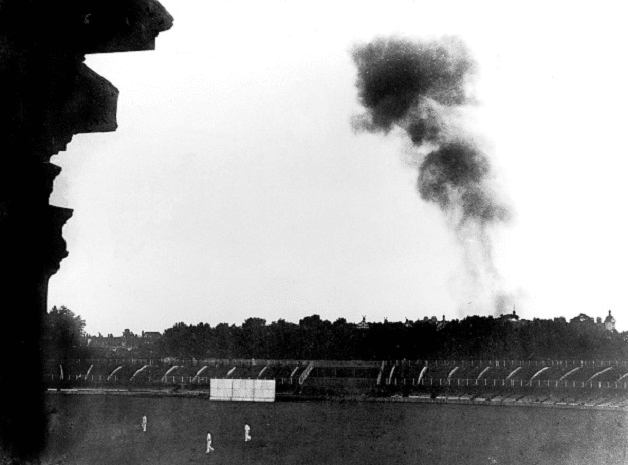Friday, August 21, 2020
Doug Wright - The Unluckiest Bowler in the Cricket History
Test Cricket Returned to Pakistan after 11 Years.
Test cricket returned to Pakistan after a gap of almost 11 years. Can you name the Pakistan XI which played in that historic match?
Tuesday, August 18, 2020
Chetan Chauhan - The Indian Stalwart
In an age of modest achievements for Indian cricket, Chetan Chauhan was a stalwart partner to the team's only star. Chetan Pratap Singh Chauhan you needed to be alive to Indian cricket when the achievements of an entire era were measured, like the life of Prufrock, with coffee spoons.
Friday, August 14, 2020
Charles Ollivierre
In 1902 Charles Ollivierre scored 167 against Warwickshire at Derby. Ollivierre scored 3 centuries for
Wednesday, July 29, 2020
Learie Constantine leads out his side to meet the West Indians at The Oval in a charity game
WG Grace (58*) and Gilbert Jessop (14*) resume for The Rest after lunch on the first day
WG Grace coming back from the nets
A great Hampshire side from 1992
Lord's came very close to being bombed this day, 1944, during one of the many wartime matches.
Lord's came very close to being bombed in 1944, during one of the many wartime matches. Here is what happened. This was a one-innings match between the Army and the RAF. There were about 3,100 people, a decent turnaround at a time when lockdowns were common. The Army boasted of Gubby Allen, Godfrey Evans, Maurice Leyland, Dick Pollard, Jack Robertson, Charlie Palmer. The RAF featured Wally Hammond, Reg Simpson, Bob Wyatt, David Townsend, Les Ames, Charlie Barnett, and Bill Edrich.
The Army reached 57/1. Flight Officer Wyatt, who led England 16 times in The 1930s, was bowling to Lieutenant Robertson, who would play 11 Tests after the
War and average 46. Robertson might have played more had he broken through in
that Hutton-Washbrook-Compton-Edrich era.
Now, at this point, everyone heard a
familiar noise. The cricketers, all soldiers, obviously recognized the German
aircraft, approaching Lord's. It was designed to crash and explode. The
cricketers followed the drill and threw themselves on the ground. The crowd
took cover.
There are multiple versions of where
it landed. Andrew Ward mentioned that it fell 200 meters short, on Albert Road.
Regent's Park, reported Wisden. You can see the smoke here. Then the most
remarkable thing happened. Instead of calling the match off, the cricketers
decided to continue.
However, the situation was obviously tense. Wyatt bowled the first ball, then another, this time a bouncer. And Robertson hooked it for six. And the spell broke. What greater mood-lifter can there be, than a six, during the gloom of a World War? What greater mood-lifter can there be, than cricket, during a pandemic?










